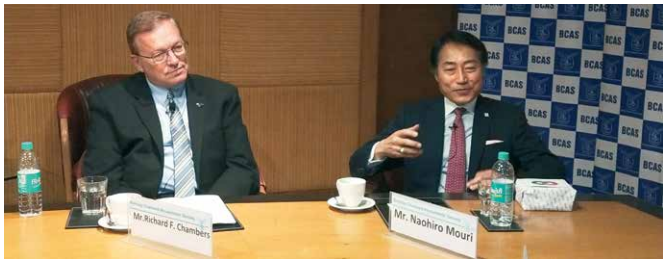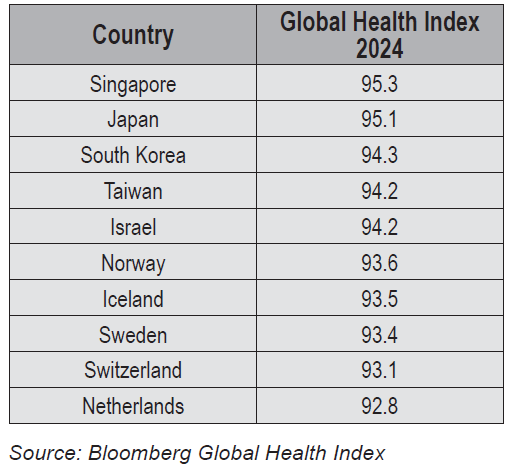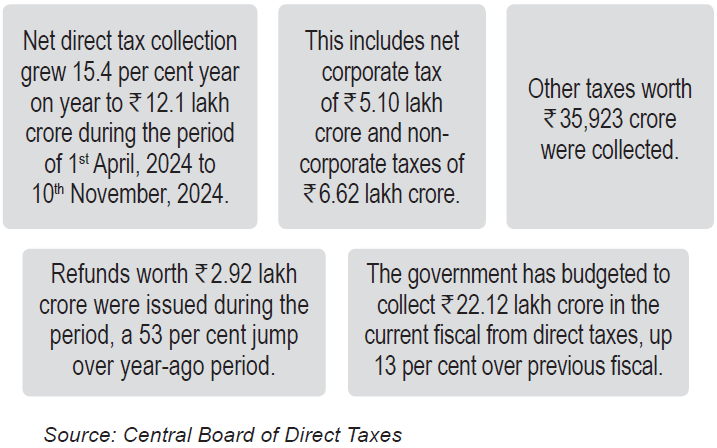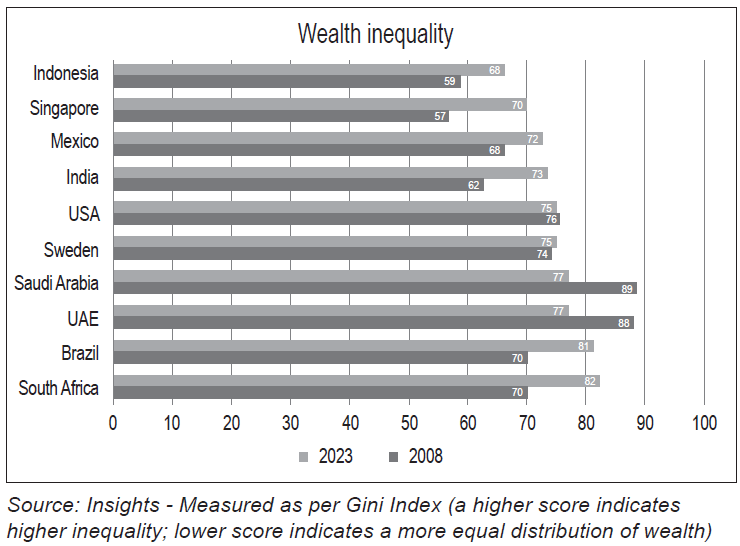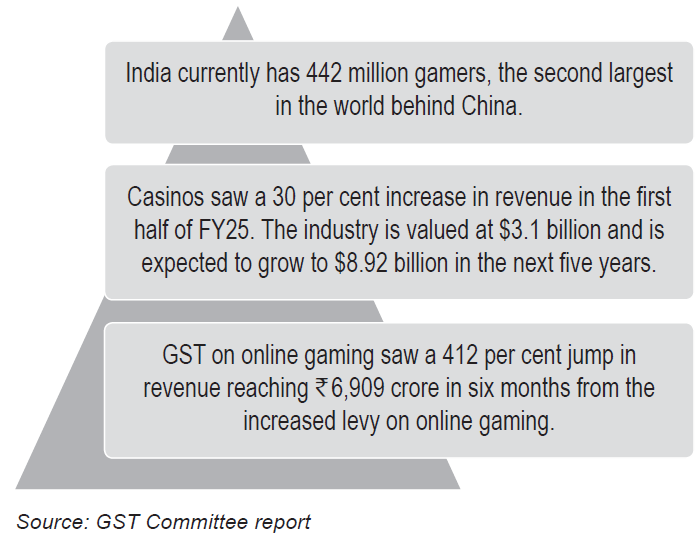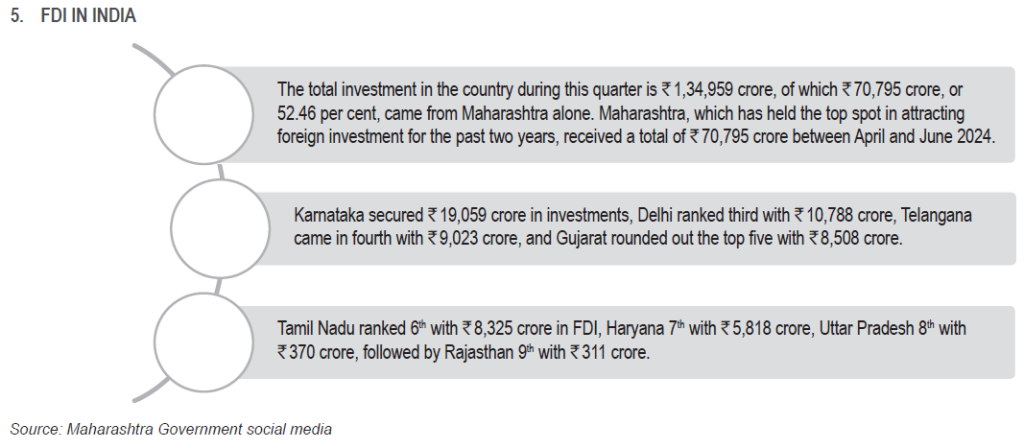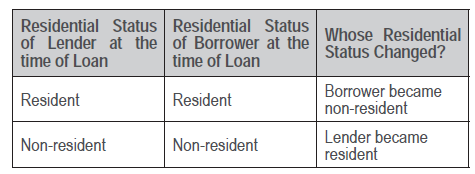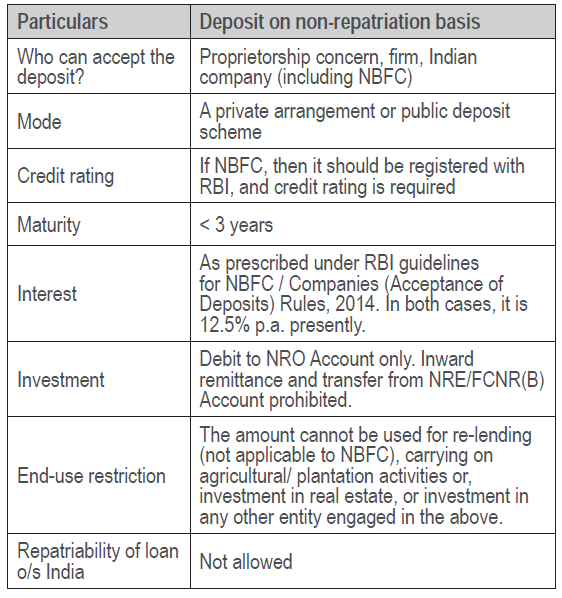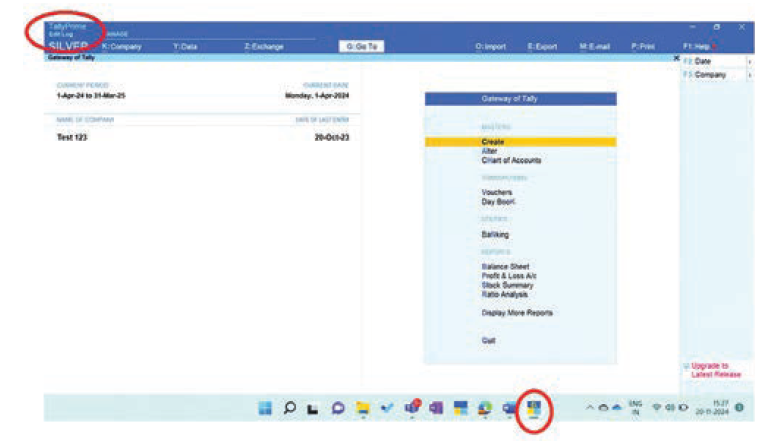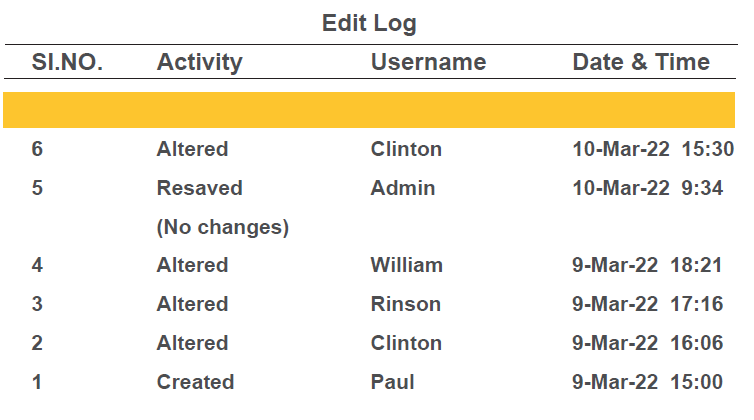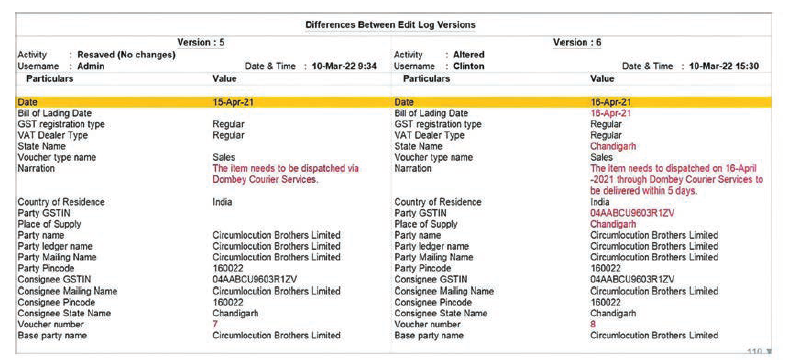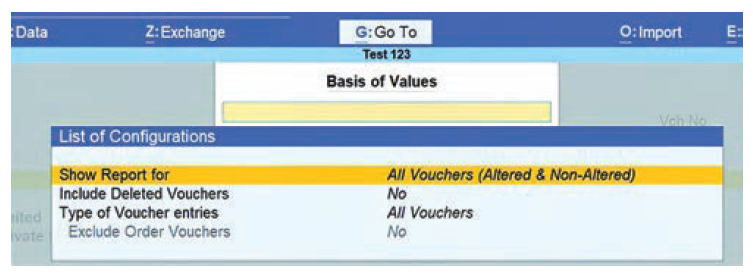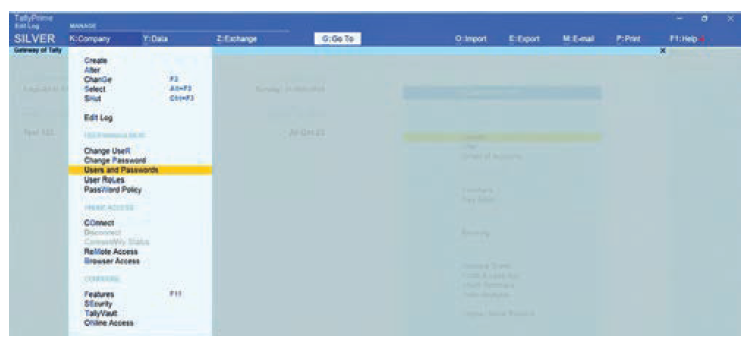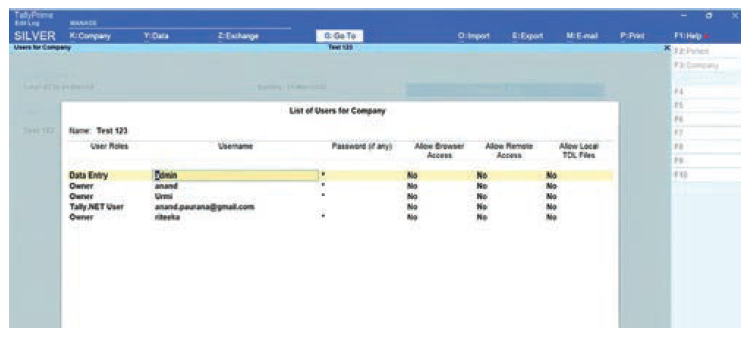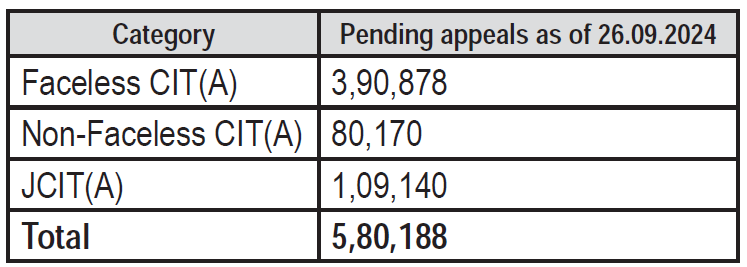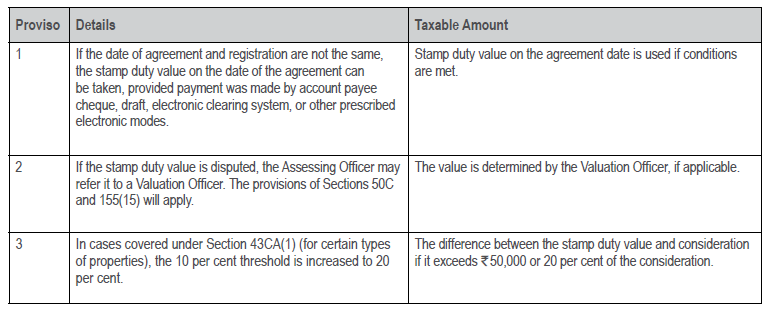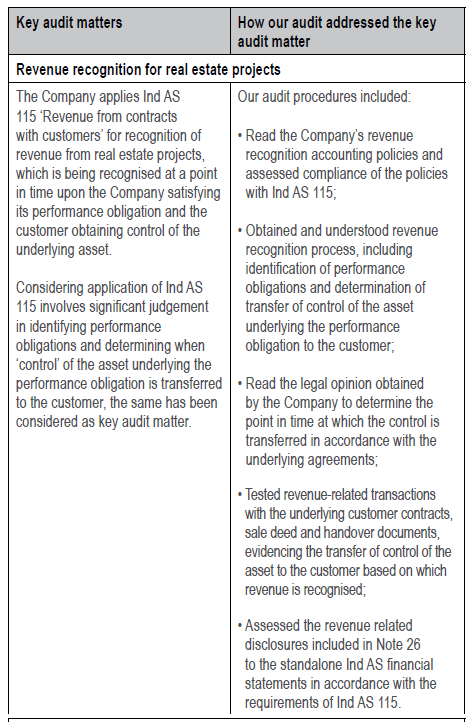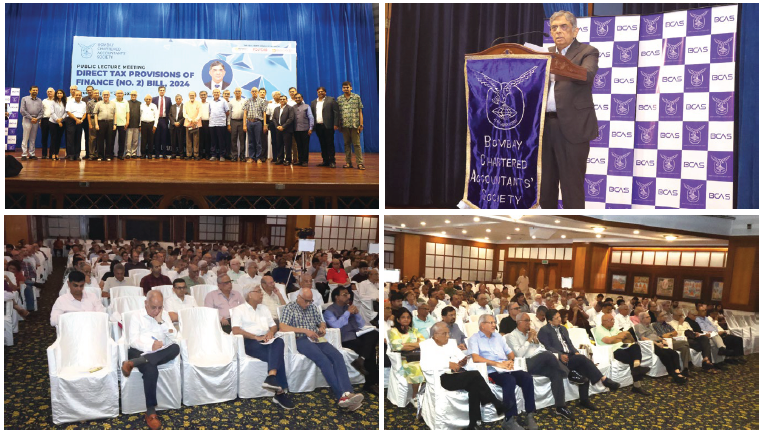ISSUE FOR CONSIDERATION
The revised procedure for reassessment introduced with effect from 1st April, 2021 is a two-stage process – a procedure u/s 148A for deciding whether it is a fit case for issue of notice for reassessment, and the procedure for reassessment u/s 148. While the reassessment has to be done in a faceless manner as required by section 151A by the National Faceless Assessment Centre / Faceless Assessing Officer (NFAC / FAO), the procedure u/s 148A to determine whether the case is fit for reassessment is not required to be conducted in a faceless manner and has therefore to be conducted by the Jurisdictional Assessing Officer (JAO).
Under section 148A(3) [s.148A(d) till 31st August, 2024], the Assessing Officer (AO) is required to pass an order, after taking approval of the specified authority u/s 151, determining whether or not the case is fit for reassessment. This has to be done by the AO after issuing show cause notice to the assessee and considering the reply of the assessee. If the case is found fit for reassessment, u/s 148(1), the AO is required to issue a notice u/s 148, along with a copy of the order passed u/s 148A(3)/148A(d), requiring the assessee to furnish a return of income for the relevant
assessment year.
In most cases of reassessment, the JAO has been issuing the notice u/s 148 and serving it on the assessee, along with the order u/s 148A(3)/148A(d). The issue has arisen before the High Courts as to whether such a notice u/s 148 should have been issued by the FAO, and therefore whether the notice u/s 148 and the consequent reassessment proceedings are valid in law. While the Karnataka, Telangana, Bombay and Gauhati High Courts have recently taken the view that such notice issued by the JAO is invalid since it ought to have been issued by the FAO, the Delhi High Court has upheld the validity of such a notice issued by the FAO.
While this controversy has been covered in the June 2024 issue of the BCA Journal, at that point of time there were only two High Court decisions on the subject, that of the Calcutta High Court and one of the Bombay High Court. The subsequent High Court decisions have dealt with the subject at great length, in particular, the Delhi High Court, and therefore it was thought fit to cover
the greater detail of this controversy that has come to the fore.
HEXAWARE TECHNOLOGIES’ CASE
The issue had come up for consideration before the Bombay High Court in the case of Hexaware Technologies Ltd vs. ACIT 464 ITR 430.
In this case, the assessee company was engaged in information technology consulting, software development and business process services. For assessment Year 2015-16, the assessee had filed its return of income on 28th November, 2015. Its assessment was completed u/s 143(3) vide assessment order dated 30th November, 2017.
The JAO issued a notice dated 8th April, 2021 under section 148 (pre-amendment) stating that he had reason to believe that income chargeable to tax for Assessment Year 2015-2016 had escaped assessment within the meaning of Section 147. The assessee filed a writ petition before the Bombay High Court challenging the notice u/s 148 on the ground that the notice had been issued on the basis of provisions which had ceased to exist and were no longer in the statute. The writ
petition was allowed by the Bombay High Court on 29th March, 2022, holding that the notice dated 8th April, 2021 was invalid.
On a Special leave Petition filed by the Revenue in the case of Union of India vs. Ashish Agarwal 444 ITR 1 (SC), the Supreme Court, in exercise of jurisdiction under Article 142 of the Constitution of India, passed orders with respect to the notices and inter alia held that the notices issued under section 148 after 1st April, 2021 be treated as notices issued under section 148A(b); and provided for timelines to be followed by the AOs for providing assessees the information and material relied upon by the Revenue for initiating reassessment proceedings. The Supreme Court also clarified that all the defenses available to assessees under the provisions of the Act would be available to the assessee.
Thereafter, the JAO issued notice dated 25th May, 2022, stating that the notice was issued in view of the decision of the Supreme Court in Ashish Agarwal (supra). The assessee filed its objections to the validity of the notice and proposed reassessment vide its letter dated 10th June, 2022. The JAO passed an order u/s 148A(d) on 26th August, 2022, holding that it was fit case for reassessment on some of the grounds. Notice u/s 148 was issued manually by the JAO on 27th August, 2022, stating that the JAO had information which suggested that income chargeable to tax had escaped assessment for AY 2015-16.
The assessee again approached the Bombay High Court with a writ petition, challenging the validity of notice dated 25th May, 2022, order u/s 148A(d) dated 26th August, 2022 and notice u/s 148 dated 27th August, 2022 on various grounds, including that the notice u/s 148 was invalid as it had been issued by the JAO and not by the FAO.
Before the Bombay High Court, on behalf of the assessee, besides other arguments relating to the validity of the notices, it was argued that the notice u/s 148 dated 27th August, 2022 was invalid and bad in law, being issued by the JAO, which was not in accordance with Section 151A, which gave power to the CBDT to notify the Scheme for the purpose of assessment, reassessment or recomputation under section 147, for issuance of notice under section 148 or for conducting of inquiry or issuance of show cause notice or passing of order under section 148A or sanction for issuance of notice under section 151.
In exercise of the powers conferred under section 151A, the CBDT issued a notification dated 29th March, 2022 after laying the same before each House of Parliament, and formulated a Scheme called “the e-Assessment of Income Escaping Assessment Scheme, 2022” (the Scheme). The Scheme provides that (a) the assessment, reassessment or recomputation under section 147 and (b) the issuance of notice under section 148 shall be through automated allocation, in accordance with Risk Management Strategy (RMS) formulated by the Board as referred to in Section 148 for issuance of notice and in a faceless manner, to the extent provided in Section 144B with reference to making assessment or reassessment of total income or loss of assessee. The notice dated
27th August, 2022 had been issued by the JAO and not by the NFAC, which was not in accordance with the Scheme.
On behalf of the Revenue, in relation to the jurisdiction of the JAO to issue notice u/s 148, relying on the notification dated 29th March 2022 [Notification No. 18/2022/F. No.370142/16/2022-TPL], it was submitted that:
(i) The guideline dated 1st August, 2022 issued by the CBDT includes a suggested format for issuing notice under section 148, as an Annexure to the said guideline and it requires the designation of the AO along with the office address to be mentioned and, therefore, it is clear that the JAO is required to issue the said notice and not the FAO.
(ii) ITBA step-by-step Document No. 2 dated 24th June, 2022, an internal document, regarding issuing notice under section 148 for the cases impacted by Hon’ble Supreme Court’s decision in the case of Ashish Agarwal (supra), requires the notice issued under section 148 to be physically signed by the AOs and, therefore, the JAO has jurisdiction to issue notice under section 148 and it need not be issued by FAO.
(iii) FAO and JAO have concurrent jurisdiction and merely because the Scheme has been framed under section 151A, does not mean that the jurisdiction of the JAO is ousted or that the JAO cannot issue the notice under section 148.
(iv) The notification dated 29th March, 2022 provides that the Scheme so framed, is applicable only ‘to the extent’ provided in Section 144B and Section 144B does not refer to issuance of notice under section 148. Hence, the notice cannot be issued by the FAO as per the said Scheme.
(v) No prejudice is caused to the assessee when the notice is issued by the JAO and, therefore, it is not open to the assessee to contend that the said notice is invalid merely because the same is not issued by the FAO.
(vi) Office Memorandum dated 20th February, 2023 issued by CBDT (TPL division) with the subject – “seeking inputs/comments on the issue of challenge of jurisdiction of JAO – reg.” the Office Memorandum contains the arguments of the Revenue in the context of the Scheme to submit that the notice under section 148 is required to be issued by the JAO and not FAO.
It was argued on behalf of the Revenue that no prejudice had been caused to assessee by the JAO issuing the notice, because the reassessment would be done by the FAO. As held by the Calcutta High Court in Triton Overseas (P.) Ltd. vs. Union of India 156 taxmann.com 318 (Cal.), this objection of the assessee had to be rejected.
The Bombay High Court analysed the provisions of section 151A and the notification dated 29th March, 2022 issued u/s 151A. It noted that as per the notified scheme, the issuance of notice under section 148 shall be through automated allocation, in accordance with RMS formulated by the Board as referred to in Section 148 for issuance of notice and in a faceless manner, to the extent provided in Section 144B with reference to making assessment or reassessment of total income or loss of assessee. It observed that the notice u/s 148 dated 27th August, 2022 had been issued by the JAO and not by the NFAC, which was not in accordance with the Scheme.
The Bombay High Court observed that the guidelines dated 1st August, 2022 relied upon by the Revenue were not applicable because these guidelines were internal guidelines as was clear from the endorsement on the first page of the guideline “Confidential For Departmental Circulation Only”. These guidelines were not issued under section 119 and were not binding on the assessee. According to the High Court, these guidelines were also not binding on the JAO as they were contrary to the provisions of the Act and the Scheme framed u/s 151A. The High Court referred to its decision in the case of Sofitel Realty LLP vs. ITO (TDS) 457 ITR 18 (Bom.), where the Court had held that guidelines were subordinate to the principal Act or Rules, and could not restrict or override the application of specific provisions enacted by the legislature. The Court further observed that the guidelines did not deal with or even refer to the Scheme dated 29th March, 2022 framed by the Government under section 151A. As per the Court, the Scheme dated 29th March, 2022 u/s 151A, which had also been laid before Parliament, would be binding on the Revenue, and the guideline dated 1st August, 2022 could not supersede the Scheme. If it provided anything to the contrary to the said Scheme, then that was required to be treated as invalid and bad in law.
As regards ITBA step-by-step Document No. 2 regarding issuance of notice u/s 148 relied upon by the Revenue, as per the High Court, an internal document could not depart from the explicit statutory provisions of, or supersede the Scheme framed by the Government under section 151A, which Scheme was also placed before both the Houses of Parliament. This was more so when the document did not even consider or refer to the Scheme. Further, the High Court was of the view that the document was clearly intended to be a manual/guide as to how to use the Income-tax Department’s (ITD) portal, and did not even claim to be a statement of the Revenue’s position/stand on the issue in question.
The Bombay High Court was further of the view that there was no question of concurrent jurisdiction of the JAO and the FAO for issuance of notice u/s 148 or even for passing assessment or reassessment order. When specific jurisdiction had been assigned to either the JAO or the FAO in the Scheme dated 29th March, 2022, then it was to the exclusion of the other. According to the High Court, to take any other view in the matter would not only result in chaos but also render the whole faceless proceedings redundant. If the argument of Revenue was to be accepted, then even when notices were issued by the FAO, it would be open to an assessee to make submission before the JAO and vice versa, which was clearly not contemplated in the Act.
The High Court further noted that the Scheme in paragraph 3 clearly provided that the issuance of notice “shall be through automated allocation” which meant that the same was mandatory, and was required to be followed by the Department, without any discretion to the ITD to choose whether to follow it or not. “Automated allocation” was defined in paragraph 2(b) of the Scheme to mean an algorithm for randomized allocation of cases by using suitable technological tools, including artificial intelligence and machine learning, with a view to optimise the use of resources. Therefore, it meant that the case could be allocated randomly to any officer who would then have jurisdiction to issue the notice under section 148. The Court noted that it was not the ITD’s case that the JAO was the random officer who was allocated jurisdiction.
Addressing the Revenue’s argument that the Scheme so framed was applicable only ‘to the extent’ provided in Section 144B, that Section 144B did not refer to issuance of notice u/s 148 and hence the notice could not be issued by the FAO as per the said Scheme, the High Court noted that section 151A itself contemplated formulation of Scheme for both assessment, reassessment or recomputation u/s 147 as well as for issuance of notice u/s 148. Therefore, the Scheme, which covered both the aforesaid aspects of the provisions of section 151A, could not be said to be applicable only for one aspect, i.e., proceedings post the issue of notice u/s 148, being assessment, reassessment or recomputation u/s 147 and inapplicable to the issuance of notice u/s 148. According to the High Court, such an argument advanced by the Revenue would render clause 3(b) of the Scheme otiose and to be ignored or contravened, as according to the JAO, even though the Scheme specifically provided for issuance of notice u/s 148 in a faceless manner, no notice was required to be issued u/s 148 in a faceless manner. In such a situation, not only clause 3(b) but also the first two lines below clause 3(b) would be otiose, as it dealt with the aspect of issuance of notice u/s 148.
If clause 3(b) of the Scheme was not applicable, then only clause 3(a) of the Scheme remained. What was covered in clause 3(a) of the Scheme was already provided in Section 144B(1), which Section provided for faceless assessment, and covered assessment, reassessment or recomputation u/s 147. Therefore, if Revenue’s arguments were to be accepted, there was no purpose of framing a Scheme only for clause 3(a), which was in any event already covered under faceless assessment regime in Section 144B. Therefore, as per the High Court, the Revenue’s argument rendered the whole Scheme redundant. An argument which rendered the whole Scheme otiose could not be accepted as correct interpretation of the Scheme.
The High Court observed that the phrase “to the extent provided in Section 144B of the Act” in the Scheme was with reference to only making assessment or reassessment or total income or loss of assessee, and was not relevant for issuing notice. The phrase “to the extent provided in Section 144B of the Act” would mean that the restriction provided in Section 144B, such as keeping the International Tax Jurisdiction or Central Circle Jurisdiction out of the ambit of Section 144B, would also apply under the Scheme. Further the exceptions provided in sub-section (7) and (8) of Section 144B would also be applicable to the Scheme.
As per the Bombay High Court, when an authority acted contrary to law, the said act of the Authority was required to be quashed and set aside as invalid and bad in law, and the person seeking to quash such an action was not required to establish prejudice from the said act. An act which was done by an authority contrary to the provisions of the statute itself caused prejudice to an assessee. All assessees are entitled to be assessed as per law and by following the procedure prescribed by law. Therefore, when the Income-tax Authority proposed to act against an assessee without following the due process of law, the said action itself resulted in a prejudice to the assessee.
With respect to the Office Memorandum (OM) dated 20th February, 2023, the Bombay High Court observed that that OM merely contained the comments of the Revenue issued with the approval of Member (L&S), CBDT, and was not in the nature of a guideline or instruction issued u/s 119 so as to have any binding effect on the Revenue. Further, some of the contents of the OM were clearly contrary to the provisions of the Act and the Scheme. These were highlighted by the Court as under:
1. Paragraph 3 of the OM stated that issue of the notice u/s 148 had to be through automation in accordance with the RMS referred to in section148. The issuance of notice is not through automation but through “automated allocation”. The term “automated allocation” is defined in clause 2(1)(b) of the Scheme to mean random allocation of cases to AOs. Therefore, it is clear that the AOs are randomly selected to handle a case and it is not merely notice sought to be issued through automation.
2. Paragraph 3 of the OM stated that “To this end, as provided in section 148 of the Act, the Directorate of Systems randomly selects a number of cases based on the criteria of RMS.” The reference to “random” in the Scheme is reference to selection of AO at random and not selection of Section 148 cases at random. If the cases for issuance of notice u/s 148 are selected based on criteria of the RMS, then, obviously, the same are not randomly selected, as random means something which is chosen by chance rather than according to a plan. If the ITD’s argument is that the applicability of section 148 is on random basis, then the provisions of section 148 itself would become contrary to Article 14 of the Constitution of India as being arbitrary and unreasonable. The term ‘random’, in the Court’s view, had been used in the context of assigning the case to a random AO, i.e., an AO would be randomly chosen by the system to handle a particular case. The term ‘random’ was not used for selection of case for issuance of notice u/s 148 as had been alleged by the Revenue in the OM. Further, in paragraph 3.2 of the OM, with respect to the reassessment proceedings, the reference to ‘random allocation’ had correctly been made as random allocation of cases to the Assessment Units by the NFAC. The Court observed that when random allocation was with reference to officer for reassessment, then the same would equally apply for issuance of notice u/s 148.
3. The conclusion in paragraph 3 of the OM that “Therefore, as provided in the scheme the notice u/s 148 of the Act is issued on automated allocation of cases to the AO based on the risk management criteria” was also held to be factually incorrect and on the basis of incorrect interpretation of the Scheme by the High Court. Clause 2(1)(b) of the Scheme, which defined ‘automated allocation’, did not provide that the automated allocation of case to the AO was based on the risk management criteria. The reference to risk management criteria in clause 3 of the Scheme was to the effect that the notice u/s 148 should be in accordance with the RMS formulated by the board, which was in accordance with Explanation 1 to Section 148.
4. In paragraph 3.1 of the OM, it was stated that the cases selected prior to issuance of notice are decided on the basis of an algorithm as per RMS and are, therefore, randomly selected. It was further stated that these cases are ‘flagged’ to the JAO by the Directorate of Systems, the JAO does not have any control over the process and has no way of predicting or determining beforehand whether the case will be ‘flagged’ by the system. The contention of the Revenue is that only cases which are ‘flagged’ by the system as per the RMS formulated by CBDT can be considered by the AO for reopening. In clause (i) in Explanation 1 to Section 148, the term “flagged” has been deleted by the Finance Act, 2022, with effect from 1st April, 2022. In any case, whether only cases which are flagged can be reopened or not is not relevant to decide the scope of the Scheme framed under section 151A.
5. As regards the statement in paragraph 3.1 of the OM that “Therefore, whether JAO or NFAC should issue such notice is decided by administration keeping in mind the end result of natural justice to the assessees as well as completion of required procedure in a reasonable time”, the High Court was of the opinion that there was no such power given to the administration under either Section 151A or under the Scheme. The Scheme was clear and categorical that notice u/s 148 shall be issued through automated allocation and in a faceless manner.
6. The statement in paragraph 3.3 of the OM that “Here it is pertinent to note that the said notification does not state whether the notices to be issued by the NFAC or the Jurisdictional Assessing Officer (“JAO”)……It states that issuance of notice under section 148 of the Act shall be through automated allocation in accordance with the RMS and that the assessment shall be in faceless manner to the extent provided in section 144B of the Act” was also held to be erroneous by the High Court. The Scheme was categoric that the notice u/s 148 was to be issued through automated allocation and in a faceless manner. The Scheme clearly provided that the notice u/s 148 of the Act was required to be issued by NFAC and not the JAO. Further, unlike as canvassed by Revenue that only the assessment shall be in faceless manner, the Scheme was very clear that both the issuance of notice and assessment shall be in faceless manner.
7. In paragraph 5 of the OM, a completely unsustainable and illogical submission had been made that Section 151A considers that procedures may be modified under the Act or laid out, considering the technological feasibility at the time. Reading the Scheme along with Section 151A made it clear that neither the Section or the Scheme spoke about the detailed specifics of the procedure to be followed therein. The argument of the Revenue that Section 151A considered that the procedure may be modified under the Act was without appreciating that if the procedure was required to be modified, then that would require modification of the notified Scheme. It was not open to the Revenue to refuse to follow the Scheme as the Scheme was clearly mandatory and was required to be followed by all AOs.
8. The argument of the Revenue in paragraph 5.1 of the OM that the Section and Scheme had left it to the administration to devise and modify procedures with time while remaining confined to the principles laid down in the said Section and Scheme, was without appreciating that one of the main principles laid down in the Scheme was that the notice u/s 148 was required to be issued through automated allocation and in a faceless manner.
The Bombay High Court refused to treat the Calcutta High Court decision in Triton Overseas (supra) as a precedent, since the Calcutta High Court had passed the order without considering the Scheme dated 29th March, 2022. The Calcutta High Court had only referred to the OM dated 20th February, 2023, which had been considered by the Bombay High Court. The Bombay High Court expressed its agreement with the decision of the Telangana High Court in the case of Kankanala Ravindra Reddy vs. ITO 295 Taxman 652, which had held that in view of the provisions of Section 151A read with the Scheme dated 29th March, 2022, the notices issued by the JAOs were invalid and bad in law.
The Bombay High Court therefore held that the notice u/s 148 was invalid and bad in law, being issued by the JAO, as the same was not in accordance with Section 151A.
The view taken in this decision of the Bombay High Court was followed in many more subsequent decisions of the Bombay High Court, and by other High Courts in the cases of Govind Singh vs. ITO 300 Taxman 216 (HP), Jatinder Singh Bhangu vs. Union of India 466 ITR 474 (P&H), and Jasjit Singh vs. Union of India 467 ITR 52 (P&H).
T K S BUILDERS’ CASE
The issue came up again for consideration before the Delhi High Court in the case of TKS Builders (P) Ltd v ITO 167 taxmann.com 759. A bunch of other appeals were also decided along with this.
In this case, a notice u/s 148 (pre-amendment) was issued on 31st March 2021. This was challenged by way of a writ petition. The writ petition was decided along with Suman Jeet Agarwal vs. ITO 2022 SCC OnLine Del 3141, and interim orders were passed on 24th March, 2022 restraining the tax authorities from taking any coercive action against the assessee in pursuance of the notice u/s 148. Subsequently, on 4th May, 2022, the Supreme Court pronounced its judgment in Ashish Agarwal (supra), treating all such notices issued under the pre-amended section 148 as notices issued u/s 148A(b) as inserted with effect from 1.4.2021.
Pursuant to the decision in Ashish Agarwal (supra), a notice u/s 148A(b) was issued to the assessee on 2nd June, 2022. The assessee furnished a response to that notice on 15th June, 2022. As per the procedure prescribed in Section 148A, the JAO passed an order u/s 148A(d) dated 22nd July 2022 rejecting the objections against reassessment. This was followed by issue of a notice u/s 148 of the same date.
Pursuant to Asish Agarwal’s decision, the Delhi High Court passed orders in Suman Jeet Agarwal and bunched cases on 27th September, 2022, reported as Suman Jeet Agarwal vs. ITO 449 ITR 517. Pursuant to this decision of the Delhi High Court, another notice u/s 148A(b) dated 28th October 2022 was issued to the assessee. This was followed by an order u/s 148A(d) dated 13th December, 2022 along with a notice u/s 148 of the same date. Although a final reassessment order dated 24th May, 2023 was passed, this order refers to the notice u/s 148 dated 22nd July, 2022. The assessee filed a writ petition against this order of reassessment.
The challenge to the notice u/s 148 was primarily based on the argument that, after the introduction of sections 144B and 151A read together with the E- Assessment of Income Escaping Assessment Scheme, 2022, the JAO would stand denuded of jurisdiction to commence proceedings u/s 148.
On behalf of the assessee, it was argued that once the Revenue had chosen to adopt the faceless procedure for assessment even in respect of reassessment, the JAO would have no authority to invoke Section 148. Reliance was placed on the decisions in the cases of Kankanala Ravindra Reddy (supra), Hexaware Technologies (supra), Venkatramana Reddy Patloola vs. Dy CIT 2024 SCC Online TS 1792, Rama Narayan Sah vs. Union of India 299 Taxman 276 (Gau), Jatinder Singh Bhangu vs. Union of India (supra) for this proposition.
The Delhi High Court observed that in the decision in Hexaware Technologies (supra), a detailed reference was made to an Office Memorandum dated 20th February, 2023. However, that document was actually the instructions provided to counsels for the Revenue in connection with the batch of writ petitions pending before that High Court. They were thus rightly construed as not being statutory instructions which the CBDT is otherwise empowered to issue under the Act.
The Delhi High Court, keeping in mind that its decision was likely to have an impact on a large number of matters, passed a direction on 29th August 2024 for an appropriate affidavit being filed by the Revenue, bearing in mind the larger ramifications of an action annulling innumerable notices which had come to be issued in the meanwhile. Accordingly, a detailed affidavit was filed by the Revenue. The points made in this affidavit included:
1. As envisioned in s.148, the Directorate of Systems randomly selects a number of cases based on the criteria of the RMS. The AO has no role to play in such selection. Consequent to such selection, the information is made available to the AO who, with the prior approval of specified authority, determines which of these cases are fit for proceedings u/s 147 as per the procedure provided in s.148A.
2. The scheme provides for randomized allocation of cases, to ensure fair and reasonableness in the selection of cases. In the procedure for issuance of notice u/s 148, this is ensured, as cases selected prior to issuance of the notice are decided on the basis of an algorithm as per the RMS and are, therefore, randomly selected.
3. Such cases are flagged to the JAO by the Directorate of Systems and the JAO does not have any control over the process.
4. The cases are selected on the basis of RMS in a random manner, and the JAO has no way of predicting or determining beforehand whether a case will be flagged by the Systems.
5. Consequent to the issuance of notice u/s 148 as per the procedure discussed above, cases are again randomly allocated to the Assessment Units by the National Faceless Assessment Centre as per Section 144B(1)(i).
6. Under the provisions of the Act, both the JAO as well as units under NFAC have concurrent jurisdiction. The Act does not distinguish between JAO or NFAC with respect to jurisdiction over a case. This is further corroborated by the fact that u/s 144B, the records in a case are transferred back to the JAO as soon as the assessment proceedings are completed.
7. Since s.144B does not provide for issuance of notice u/s 148, there is no ambiguity in the fact that the JAO still has jurisdiction to issue notice u/s 148.
8. The parent section 151A considers that procedures may be modified under the Act or laid down considering their technological feasibility at the time.
9. The Scheme lays down that the issuance of notice u/s 148 shall be through automated allocation in accordance with the RMS, and that the assessment shall be in a faceless manner to the extent provided in s. 144B.
10. The specifics of the various parts of the procedure will evolve with time as the technology evolves and the structures in the ITD change. The Section and the scheme have left it to the administration to devise and modify procedures with time, while remaining confined to the principles laid down in the Section and scheme. By conducting the procedures at two levels, one with the JAO and other with NFAC, an attempt has been made to introduce checks and balances within the system that the assessee can submit evidences and can avail opportunity of hearing prior to commencement of any proceedings under the Act.
11. Re-assessment proceedings consequent to the issuance of notice conducted as per the faceless assessment ensures convenience of the assessee, equitable distribution of workload among the officers and is also compatible with the technological abilities in the ITD as on date, to ensure a procedure which is seamless, reasonable and fair for the assessee.
On behalf of the Revenue, attention of the Court was drawn to the evolution of the Faceless Assessment Scheme. The various Faceless Schemes, as envisaged in the Act, were placed on record. Statutory provisions relevant to Faceless Scheme of Assessment were also considered, including sections 135A, 144B, 148 and 151A, and the Faceless Re-Assessment Scheme, 2022.
The Delhi High Court observed that with the advent of technology, the Revenue appeared to have over a course of time adopted new tools for assembling, accumulation and analysis of data embedded in the millions of returns which came to be filed every financial year, adopting measures such as Computer Aided Scrutiny Selection, Annual Information Return data and Central Information Branch data. These measures appeared to have been formulated in order to aid and assist the Revenue with respect to scrutiny assessment, investigation and evaluation.
The Instructions issued by the ITD from time to time, which assisted in appreciating how these new technological capabilities had been deployed by the ITD to aid it in the discharge of its functions, were also placed before the High Court. The order u/s 119 dated 6th September, 2021 and amending order dated 22nd September, 2021, which chronicled various categories of cases which would stand excluded from faceless assessment, were placed before the High Court, as well as the Instructions issued by the Directorate of Systems dated 16th November 2023, relating to the utilization of the Insight Portal and selection of cases in accordance with the RMS as formulated. The Notification issued u/s 120 dated 13th August 2020, which designated the authorities charged with the conduct of faceless assessment in respect of various territorial areas, was also brought to the notice of the High Court.
The Delhi High Court analysed the evolution of the Faceless Assessment Scheme. It noted that the common thread underlying the various facets of the evolving faceless assessment regime from its inception till the present, had been the felt need to enhance efficiency, transparency and accountability in the process of assessment and reducing the human interface between the AO and the assessee. It further noticed that despite the expressed intent to altogether eliminate the interface between the AO and the assessee, both the Notifications of 12th September, 2019 as well as of 13th August, 2020 had not excluded the involvement of the JAO completely and in the course of the faceless assessment process. As per the High Court, the ITD appeared to have been at all times, cautious of not precluding the involvement of JAO within the faceless assessment process. The retention of the JAO in certain phases of the assessment process reflected a balanced approach, aiming to preserve transparency and efficiency while ensuring that complex issues received appropriate attention from a qualified and experienced AO.
The High Court illustrated this by reference to:
1. the Notification of 12th September, 2019 which mandated that NFAC, after the completion of assessment, would transfer all electronic records of the case to the JAO under certain circumstances;
2. the Notification dated 13th August, 2020, which had introduced amendments to the previous Notification of 12th September, 2019, and had contemplated the role of the JAO in the faceless assessment scheme for transfer of case records, for transfer of case to the AO, and for transfer of case records of penalty proceedings.
The High Court observed that the principal question which arose for its consideration was whether s.144B precluded the JAO from initiating proceedings for reassessment in terms as contemplated u/s 148 and in accordance with the procedure prescribed in s. 148A. Analysing the provisions of s.151A, the High Court noted that as was manifest from the plain language of that provision, the underlying objective of such a scheme was to meet the legislative objective of eliminating the interface between an income tax authority and the assessee, optimal utilization of resources through economies of scale and functional specializations, the introduction of team based assessment, reassessment, recomputation as well as issuance or sanction of notices. Such team-based assessment was intended to be in accordance with the randomized allocation of cases and thus the usage of the expression “dynamic jurisdiction”.
As per the High Court, both section 144B as well as section 151A sought to introduce a system in terms of which assessment or reassessment proceedings could be entrusted to Assessment Units which would be randomly identified. Section 144B and the Explanation appended thereto defined an “automated allocation system” to mean an algorithm for randomised allocation of cases with the aid of suitable technological tools and which were envisaged to extend to the employment of artificial intelligence and machine learning. From a reading of Clause 3 of the Faceless Reassessment Scheme, 2022, assessment, reassessment or recomputation u/s 147 as well as issuance of notice u/s 148 was to be by way of an automated allocation and in a faceless manner to the extent provided in Section 144B. Clause 3 also used the expression “…..in accordance with risk management strategy formulated by the Board as referred to in Section 148 of the Act……”. The reference to RMS in the scheme was clearly intended to align with the concept of information which was spoken of in Explanations 1 and 2 of Section 148. According to the High Court, both Explanations 1 and 2 of Section 148 were of critical importance.
The Delhi High Court then went on to elaborate upon the underlying scheme and objective of the RMS which came to be formulated by the Board as well as other data analytical measures which came to be adopted for the purposes of assessment under the Act. The RMS was preceded by the adoption of various technological tools by the ITD for the purposes of analysing returns, extracting data and information pertaining to the constituents of the tax base of the country and the selection of appropriate cases for scrutiny and other measures contemplated under the Act. It noted the response made by the Minister of State for Finance in the Rajya Sabha on 7th December, 2021, where he stated that for the purposes of scrutiny, cases are selected randomly through the CASS process and “in an identity blind manner”. The High Court observed that it would thus appear that by this time, the ITD clearly had in place selection criteria which took into consideration various risk parameters, and which would operate as red flags enabling and assisting the ITD to assess or reassess as well as to scrutinize in a more effective and efficient manner. This process used data analytics and algorithms to identify cases that may need closer inspection based on specific risk parameters, such as unusual financial activity, discrepancies in tax returns, or high-value transactions. The CASS process minimised human intervention in the selection phase, aiming to make the scrutiny process more objective, efficient, and unbiased by focusing on risk-based criteria rather than manual selection.
On the concept of RMS, the High Court took note of the Insight Instruction No. 71 issued by the Directorate of Income Tax (Systems) specifically addressing this approach. As per the Instruction, RMS and the creation of an Insight Portal were digital tools created internally by the ITD in order to enable an AO to holistically evaluate individual returns, map returns that may be found to be connected and a data set thus becoming available to be used for exploratory, statistical and perhaps even inferential analysis. The Insight Portal thus assimilated data pertaining to each individual assessee across broad parameters, stretching from comparative income tax return information, financial profiles and asset details amongst various other factors. The Insight Portal thus integrated a comprehensive dataset for each individual assessee, encompassing a wide range of parameters. These included comparative analyses of income tax return histories, detailed financial profiles, asset holdings, and additional relevant financial and transactional information. This data assimilation allowed for a nuanced view of each taxpayer’s financial standing and reporting consistency across multiple dimensions. The Insight Instruction dated 16th November 2023 disclosed that the data so collected was made visible to the JAOs on the verification module of the Insight Portal. This enabled the JAO to test the completeness of disclosures made by an individual assessee against material aggregated by the system.
In addition, the Insight Portal enabled the JAO to access a Transaction Number Sequence hyperlink which would disclose the following information pertaining to that particular assessee: (a) bank account (b) aggregate gross amount related to the account (c) cash deposits in that account and (d) information with respect to immovable property transactions and other relevant details. This feature allowed JAOs to verify if a taxpayer‘s information was complete and consistent with the data gathered by the system, making it easier to catch any missing links or inaccurate information.
The Delhi High Court emphasised that the extensive framework of information which was collected, structured and made available on the Insight Portal represented data which was made visible solely to the JAO. This entire spectrum of data, information and comprehensive insight was not digitally pushed to the NFAC in the first instance. The High Court noted that the Directorate of Income Tax (Systems) was accorded the ability to randomly select cases which may have been cross referenced on the basis of the criteria and factors on which the RMS was founded. Upon such cases coming to be randomly selected and flagged, the cases so identified were then forwarded to the concerned JAO. What the ITD sought to emphasize was that the cases which were selected by the Directorate of Income Tax (Systems) based on the RMS was an exercise independently undertaken, with the JAO having no control over the selection process. It was in that light that the ITD asserted that the JAO could neither predict nor determine beforehand whether a case would be flagged by the Directorate of Income Tax (Systems).
The High Court observed that besides the technological aspects and analytical tools, the Act itself enabled the JAO itself to select cases which may merit further inquiry or investigation on the basis of information as defined. Explanation 1 to s.148 enabled an AO to form an opinion that income chargeable to tax had escaped assessment on the basis of (a) information which came to light through the RMS (b) an audit objection (c) information received under agreements with nations (d) information made available to the JAO in terms of a scheme notified u/s 135A or (e) information on which further action was warranted in consequence to an order of a Tribunal or a Court. The Act therefore permitted reassessment not only on RMS data, but also on a variety of other specified inputs, ensuring a broader foundation for initiating reassessment. Under Explanation 2 to Section 148, the material that may be gathered in the course of a search or survey also thus constituted information which came to be placed in the hands of the JAO and which may form the basis for formation of opinion of whether reassessment was merited.
The High Court then took note of the provisions of the Act which broadly identified sources from which information may be gathered by an AO for the purposes of assessment, including sections 133, 133A, 133B and 133C. It took note of the scheme for the purposes of calling for information notified u/s 135A, the powers to make reference to a Valuation officer u/s 142A and the scheme notified u/s 142B for the purposes of faceless inquiry or valuation.
The Delhi High Court then went on to consider provisions of the Act incorporated for the purposes of delineating jurisdictional boundaries and conferment of powers amongst income tax authorities, including sections 120 and 127. It noted that power to transfer a case for the purpose of centralised assessment could be exercised so as to place a particular batch of cases before any AO, irrespective of whether it had been empowered to exercise concurrent jurisdiction. The Court noted that the CBDT notifications issued for the purposes of facilitating conduct of faceless assessment and which in ambiguous terms provided that the authorities so designated in those notifications would exercise powers and discharge functions of an AO ”concurrently”, were of equal significance.
Under section 127, cases originally assigned to one officer or jurisdiction could be reassigned, grouping similar cases together for efficient handling. This power to transfer cases allowed a group of cases to be examined by a particular AO, regardless of whether that officer had authority over the cases initially. The CBDT had also issued notifications to facilitate faceless assessments, where assessments were handled without in-person interaction between the tax official and the taxpayer. These notifications allowed designated tax authorities to share the powers and duties of an AO in a concurrent manner, meaning multiple officers or authorities could simultaneously exercise the functions of an AO, especially in a faceless system. Besides, Section 144B itself conferred a power upon the Principal Chief Commissioner or the Principal Director General to transfer cases to the JAO.
The Delhi High Court took note of the deletion of sub-section (9) of section 144B by the Finance Act 2022, and the explanation given in the Explanatory Memorandum. This provided that assessment proceedings shall be void if the procedure mentioned in the section was not followed. A large number of disputes had been raised under that sub-section involving technical issues arising due to use of information technology, leading to unnecessary litigation, and hence this provision was deleted. According to the High Court, this captured the legislative intent to create an effective, fair, and flexible tax assessment process that balanced structured jurisdictional roles with the adaptability needed for centralized, faceless assessments. Notably, among the various factors that influenced this decision, what is not lost was the delicate balance sought to be struck by the Legislature between procedural adherence and practical efficiency. The Legislature recognised that while strict procedural compliance was fundamental to maintaining fairness and transparency in the assessment process, an inflexible adherence to procedure—especially in a digital and faceless assessment environment—could inadvertently lead to administrative bottlenecks and a surge in litigation. The legislature sought to ensure that the intent of the law was not overshadowed by technicalities.
The High Court observed that it became apparent that the procedure formulated and introduced by virtue of Section 144B, while undeniably transformative and disruptive and transformational, was also in many ways transitional and representative of a phased and evolving process. Various categories of cases were from inception excluded specifically from the ambit of faceless assessment. Section 144B, when it originally came to be inserted in the statute, stood confined to assessments under Sections 143(3) and 144. The words “reassessment”, ”recomputation” came to be added subsequently by virtue of Finance Act, 2022. It was this Amending Act which also added the words “Section 147” specifically in Section 144B. As the court read the section, the focal point and the nucleus of faceless assessment primarily appeared to be the assessment and analysis of returns which had been filed electronically and were to go through the rigors of regular assessment. This position emerged from a reading of the elaborate provisions contained therein and which in minute detail provided how returns were, generally under the faceless scheme, liable to be scrutinised and assessed, the random allocation of those cases to different Assessment Units, the conferment of dynamic jurisdiction upon Assessment Units, the internal review procedure pertaining to draft orders, issuance of notices and a host of other facets pertaining to assessment in general.
The High Court noted that of critical significance was the absence of any provision of Section 144B seeking to regulate the commencement of reassessment action as contemplated under Sections 147, 148 and 148A. The provision was conspicuously silent with respect to commencement of action u/s 147. Of equal importance was the fact that although Section 144B described the various steps to be taken in the course of assessment and assigned roles to different constituents of the NFAC, it did not, at least explicitly, incorporate any machinery provisions which may be read as intended to regulate the pre-issuance stages of a notice u/s 148. While it was true that Section 144B did specifically refer to reassessment, the Court was of the view that the significance of that insertion would perhaps have to adjudged bearing in mind the interpretation of the scheme for reassessment which had been advocated for the Court’s consideration by the ITD. The Court was of the view that this not only appealed to reason but may also be the more sustainable view to adopt if one were to harmoniously interpret the provisions of the Act alongside the schemes for faceless assessment coupled with the underlying objectives of reducing human interface. This approach sought to ensure that the reassessment scheme functioned in concert with the faceless assessment framework.
The Delhi High Court observed that a reassessment need not in all conceivable contingencies be triggered by a return that an assessee may choose to lodge electronically. It is a complex process driven by multiple factors that extend far beyond the initial filing of a return. As per explanations 1 and 2 of Section 148, reassessment may be commenced on the basis of information that may otherwise come to be placed in the hands of the JAO. It may be initiated if an audit objection were flagged and placed for the consideration of the JAO. Material unearthed in the course of a search or material, books of accounts or documents requisitioned under Section 132A could also constitute the basis for initiation of reassessment. Material gathered in the course of survey may also be the basis of formation of opinion as to whether income had escaped assessment. These are not founded on the material or data which may be available with NFAC.
The statute thus clearly conceived of various scenarios where the case of an assessee may be selected for examination and scrutiny on the basis of information and material that fell into the hands of the JAO directly or was otherwise made available with or without the aid of the RMS. The High Court was of the opinion that it would therefore be erroneous to view Section 144B as constituting the solitary basis for initiation of reassessment. Section 144B was primarily procedural and was principally concerned with prescribing the manner in which a faceless assessment may be conducted as opposed to constituting a source of power to assess or reassess in itself. The Dehi High Court observed that Section 144B was not intended to establish a substantive basis for the exercise of reassessment powers; rather, it was inherently procedural. Its function was confined to outlining the processes through which faceless assessments were to be conducted, ensuring efficiency and consistency in the manner of assessment rather than determining the substantive grounds upon which reassessment was founded. Therefore, Section 144B was procedural, forming part of the broader legislative framework aimed at structuring the assessment process without encroaching upon the substantive grounds for reassessment itself. That provision was not the singular and exclusive repository of the power to assess as contemplated under the Act.
The randomized allocation of cases based on the adopted algorithm and the use of technological tools, including artificial intelligence and machine learning, appeared to be primarily aimed at subserving the primary objective of faceless assessment, namely, of reducing a direct interface, for reasons of probity and to obviate allegations of individual arbitrariness. However, as per the High Court, it was wholly incorrect to view the faceless assessment scheme as introduced by virtue of Section 144B as being the solitary route which the Act contemplated being tread for the purposes of assessment and reassessment.
The core attributes of the faceless assessment system revolved around the principle of randomised allocation, where ‘random’ in its literal sense meant that case assignments were made without any predetermined or controlling factor. This principle was a deliberate feature of the faceless assessment framework, aimed at reducing direct human interaction — a facet historically susceptible to biases and potential misconduct. By substituting the human element with a carefully designed algorithm, the system restricted human involvement to only those essential stages, thereby enhancing fairness and accountability.
The High Court observed that Section 144B therefore played a crucial role by establishing the procedural mechanisms for faceless assessments, specifically through the random allocation of cases to different Assessment Units. However, to read into Section 144B a substantive basis for assessments and reassessments would extend its role beyond its intended design. The section‘s true function lay in facilitating an unbiased, algorithm-driven distribution of cases, supporting the overarching objective of minimizing direct human interaction in the assessment process. As per the High Court, it would be incorrect to interpret Section 144B as the sole pathway envisioned by the Act for conducting assessments or initiating reassessments. Instead, it should be recognised as one component within a broader statutory framework that provides multiple avenues for the lawful assessment and reassessment of returns.
The Delhi High Court further observed that the conferred jurisdiction upon authorities for the purposes of faceless assessment itself used the expression “concurrently”. That word would mean contemporaneous or in conjunction with, as opposed to a complete ouster of the authority otherwise conferred upon an authority under the Act. This too was clearly demonstrative of the Act not intending to deprive the JAO completely of the power to reassess. In understanding the concept of concurrent jurisdiction, it was essential to recognise that the retention of a human element within the broader framework of the National Faceless Assessment Centre (NeAC) does not conflict with the powers held by the JAO. Rather, as per the High Court, this setup must be viewed as complementary, reinforcing both accountability and adaptability within the assessment process.
The Delhi High Court referred to its decision in the case of Sanjay Gandhi Memorial Trust vs CIT(E) 455 ITR 164,where it had been concluded that, while the faceless system centralised case handling through the NFAC, this framework did not completely replace or nullify the JAO‘s role. It held that the CBDT notifications further affirmed this shared responsibility, specifying that the NFAC and the JAO hold concurrent jurisdiction, thereby allowing the faceless system to conduct assessments without stripping the JAO of its foundational authority. In this way, the High Court had held in that case that the JAO‘s retention of original jurisdiction provided a critical balance, ensuring that human oversight remained available within the faceless assessment structure when needed, and that the JAO‘s authority was not merely residual but an active, complementary role that reinforced the flexibility of the assessment system.
The Delhi High Court stated that in that case, the Court came to the firm conclusion that irrespective of the system of faceless assessment that had come to be introduced and adopted, it would be wholly incorrect to hold or construe the provisions of the Act as denuding the JAO of the authority to undertake an assessment or of the said authority being completely deprived of authority and jurisdiction. According to the High Court, the judgment in Sanjay Gandhi Memorial Trust (supra) was a resounding answer to the challenge as raised by the writ petitions before it, and reinforced its conclusion of the two permissible modes of assessment being complementary, and the Act envisaging a coexistence of the two modes.
Besides, according to the Delhi High Court, if the position canvassed on behalf of the assessee were to be accepted, the provisions relating to the various sources of information which the JAO stood independently enabled to access and which could constitute material justifying initiation of reassessment, would be rendered a complete dead letter and the information so gathered becoming worthless and incapable of being acted upon. This is because such information is firstly provided to the JAO and it is that authority which is statutorily obliged to assess and evaluate the same in the first instance.
The Delhi High Court held that within the framework of the faceless assessment system, the JAO retained powers that do not conflict with, but rather complement, the objectives of neutrality and efficiency. The faceless assessment scheme centralised processes under the Faceless Assessing Officer (FAO) to reduce direct interaction. However, this structure did not diminish the JAO‘s authority. Instead, the JAO‘s retained jurisdiction was vital for ensuring continuity and accountability, acting as a complementary element to the faceless assessment framework. the JAO‘s powers should be understood as integral and not in conflict with faceless assessment. Rather, it represented a foundational jurisdictional safeguard, enabling the JAO to initiate reassessment based on independent, credible sources of information. This concurrent authority of the JAO reinforced the integrity and adaptability of the faceless system, ensuring that both centralised and jurisdictional assessments operated cohesively within the larger statutory framework.
The High Court also noted that an Assessing Unit of the NFAC derived no authority or jurisdiction till such time as a case was randomly allocated to it, which triggered the assessment process in accordance with the procedure prescribed by Section 144B. The evaluation of data and information would precede the actual process of assessment. As per the Delhi High Court, if the interpretation which was advocated by the assessee were to be countenanced, the appraisal and analysis of information and data functions which the Act entrusted upon the JAO would be rendered wholly unworkable and clearly be contrary to the purpose and intent of the assessment power as constructed under the Act. Eliminating the JAO’s role altogether would not only fail to further these goals but could actually compromise the system‘s functionality and flexibility. The JAO‘s retained powers, particularly in accessing and evaluating specific information sources for reassessment, played a critical role in supplementing the centralized, algorithm-driven processes of faceless assessment. By allowing the JAO to operate in conjunction with the FAO, the Act ensured that both roles work complementarily to deliver comprehensive and balanced assessments. Far from conflicting with the faceless system, the JAO‘s role enhanced it, ensuring that assessments remained grounded in thorough investigation.
The Delhi High Court observed that the decisions of various High Courts which had taken a contrary view, had proceeded on the basis that consequent to faceless assessment coming into force by virtue of Section 144B, the JAO stood completely deprived of jurisdiction. In Hexaware Technologies (supra), a specific issue with respect to the validity of the notice came to be raised, with it being argued that once the scheme of faceless reassessment had come to be promulgated, the JAO would stand denuded of jurisdiction. The Delhi High Court noted that apart from the Faceless E-Assessment Scheme 2022 itself and the instructions which were provided to counsel appearing for the Revenue, most of the High Courts did not appear to have had the benefit of reviewing the copious material which the counsel for the Revenue had so painstakingly assimilated and placed for the Delhi High Court’s consideration. They also did not appear to have had the advantage of a principled stand of the Revenue having been placed on the record of those proceedings.
In Hexaware Technologies (supra), the Bombay High Court ultimately came to conclude that there could be no question of a concurrent jurisdiction of the JAO and the FAO for issuance of notice u/s 148. From a reading of the record, the Delhi High Court observed that it was unclear whether the notifications conferring jurisdiction on authorities of the NFAC for the purposes of conducting faceless assessment was placed before the Bombay High Court. At least the decision made no reference to the notification of 13th August, 2020, which had been produced in the proceedings before the Delhi High Court, and which in clear and unambiguous terms declared that the officers empowered to conduct faceless assessment were being conferred concurrent powers and functions of the AO. The Delhi High Court therefore expressed its inability to concur with Hexaware Technologies decision, bearing in mind the various sources of information and material which may assist a JAO in forming an opinion as to whether income had escaped assessment and which had been commented upon earlier.
The Delhi High Court observed that the other High Courts too as well as subsequent decisions of the Bombay High Court did not appear to have had the advantage of reviewing and analysing the material that had been placed by the Revenue in the proceedings before the Delhi High Court. In Ram Narayan Sah’s case (supra), though the Delhi High Court decision in the case of Sanjay Gandhi Memorial Trust (supra) was cited before it, the judgment of the Gauhati High Court neither entered any reservation nor did it record any reasons which may have assisted the Delhi High Court in discerning what weighed with the Gauhati High Court to brush aside the aspect of concurrent jurisdiction. The Delhi High Court stated that unlike prior cases where certain High Courts, including in Hexaware Technologies (supra), were not provided with the full spectrum of relevant notifications and contextual information, the extensive documentation in the matter before it had helped clarify ambiguities in both law and fact. This record had allowed for a deeper analysis, addressing key points left unexamined in previous judgments, and had illuminated the legislative and procedural intentions behind the faceless assessment scheme, particularly the concurrent jurisdiction between the JAO and FAO.
The Delhi High Court further observed that in a recent decision rendered by the Gujarat High Court, in the case of Talati and Talati LLP vs. Office of ACIT 167 taxmann.com 371, a view had been expressed which appeared to be in tune with the conclusions which the Delhi High Court had reached.
Referring to clause 3 of the Faceless Reassessment Scheme 2022, which provided that assessment, reassessment or recomputation u/s 147 as well as issuance of notice u/s 148 would be through automated allocation in accordance with the risk management strategy and in a faceless manner, the Delhi High Court observed that from the punctuation, by the placement of commas, it appeared to have been the clear intent of the author to separate and segregate the phases of initiation of action in accordance with RMS, the formation of opinion whether circumstances warrant action u/s 148 being undertaken by issuance of notice, and the actual undertaking of assessment itself. As per the Delhi High Court, beyond the specific use of punctuation within Clause 3, a comprehensive reading of the Faceless Reassessment Scheme 2022, supported by the extensive material presented by the Revenue, bolstered the clear intent underlying each phase of the faceless assessment process.
The Delhi High Court stated that the Revenue would appear to be correct in its submission that when material comes to be placed in the hands of the JAO by the RMS, he would consequently be entitled to initiate the process of reassessment by following the procedure prescribed u/s 148A. If after consideration of the objections that are preferred, he stood firm in his opinion that income was likely to have escaped assessment, he would transmit the relevant record to the NFAC. It is at that stage and on receipt of the said material by NFAC that the concepts of automated allocation and faceless distribution would come into play. The actual assessment would thus be conducted in a faceless manner and in accordance with an allocation that the NFAC would make. In the opinion of the Delhi High Court, this would be the only legally sustainable construction liable to be accorded to the scheme. This conclusion would thus strike a harmonious balance between the evaluation of information made available to an AO, the preliminary consideration of information for the purposes of formation of opinion and its ultimate assessment in a faceless manner.
The Delhi High Court stated that it was guided by the principles of beneficial construction, to the effect that avoiding an interpretation that would render portions of the Act or the Faceless Assessment Scheme superfluous or ineffective should be avoided. To assert that the JAO‘s powers become redundant under the faceless assessment framework would conflict with beneficial construction, as it would undermine provisions specifically established to support comprehensive data analysis and informed decision-making, such as the JAO‘s access to RMS and Insight Portal information.
The Delhi High Court therefore dismissed the writ petitions filed before it.
OBSERVATIONS
From the text of the decisions in Hexaware Technologies (supra) and those of other High Courts which decided the matter, besides the Delhi High Court, none of the other High Courts had the occasion to examine the Faceless Assessment Scheme, 2022 and the notifications issued for that purpose, in such minute detail as was done by the Delhi High Court. The Delhi High Court went into the object of the Scheme, the manner in which it was to be implemented and the difficulties faced in implementing it and how these were resolved.
In particular, the notification NO. S.O. 2757 [NO. 65/2020/F.NO. 187/3/2020-ITA-I] dated 13th August, 2020, was not considered by those High Courts. This specified as under:
“In pursuance of the powers conferred by sub-sections (1), (2) and (5) of section 120 of the Income-tax Act, 1961 (43 of 1961) (hereinafter referred to as the said Act, the Central Board of Direct Taxes hereby directs that the Income-tax Authorities of Regional e-Assessment Centres(hereinafter referred to as the ReACs) specified in Column (2) of the Schedule below, having their headquarters at the places mentioned in column (3) of the said Schedule, shall exercise the powers and functions of Assessing Officers concurrently, to facilitate the conduct of Faceless Assessment proceedings in respect of territorial areas mentioned in the column (4), persons or classes of persons mentioned in the column (5) and cases or classes of cases mentioned in the column (6) of the Schedule-1 of the notification No. 50 of 2014 in S.O. 2752 (E), dated the 22nd October, 2014 published in the Gazette of India, Extraordinary Part II, section 3, sub-section (ii):”
Had this notification been brought to the attention of the other High Courts, they may perhaps have taken a different view of the matter.
Further, the Revenue filed a detailed affidavit, explaining the logic of various provisions of and governing the Scheme. The Delhi High Court therefore had the opportunity to examine in detail the role of the JAO, the role of the FAO, and the logic behind the bifurcation of the activities of reassessment. Such details were not before the other High Courts. Again, had all such material been before the other High Courts as well, perhaps those decisions may have been otherwise.
One aspect does not seem to have been considered by the Delhi High Court — the purpose of introduction of section 151A. The Delhi High Court has expressed a view that the JAO would be entitled to initiate the process of reassessment by following the procedure u/s. 148A, and thereafter he would transmit the relevant records to the NFAC. The role of NFAC would come into play only after receiving the said materials from the JAO. If the view is taken that section 151A was inserted with effect from 1st November, 2022 by the Taxation and Other Laws (Relaxation and Amendment of Certain Provisions) Act, 2020 only to permit conduct of faceless reassessment proceedings by the NFAC, it may be seen that such a practice was prevalent even before the insertion of Section 151A. The Faceless Assessment Scheme, 2019 as amended by Notification No. 61/2020 dated 13-8-2020 specifically provided for reassessment in pursuance of notices issued under Section 148 also in a faceless manner. Therefore, effectively, there was no change in the position, post insertion of Section 151A, with respect to when the role of NFAC would come into play, If the view is taken that section 151A was inserted only to facilitate faceless reassessment proceedings and not for issue of notice u/s 148, it will render the provisions of Section 151A redundant in so far as it provides specifically for issuance of notice under Section 148, besides conduct of enquiries or issue of show-cause notice or passing of order under Section 148A. This aspect may require greater consideration.
While the Delhi High Court’s view seems to be the better view of the matter, being a more detailed analysis, the matter will be set to rest only after the decision of the Supreme Court on the issue. The Supreme Court had fixed the matters initially for hearing in October and thereafter November 2024, which have since been adjourned to 28th January, 2025. Hopefully, this controversy will soon be resolved in a few months by the Supreme Court.

